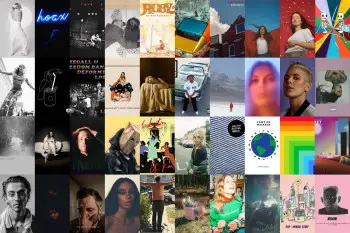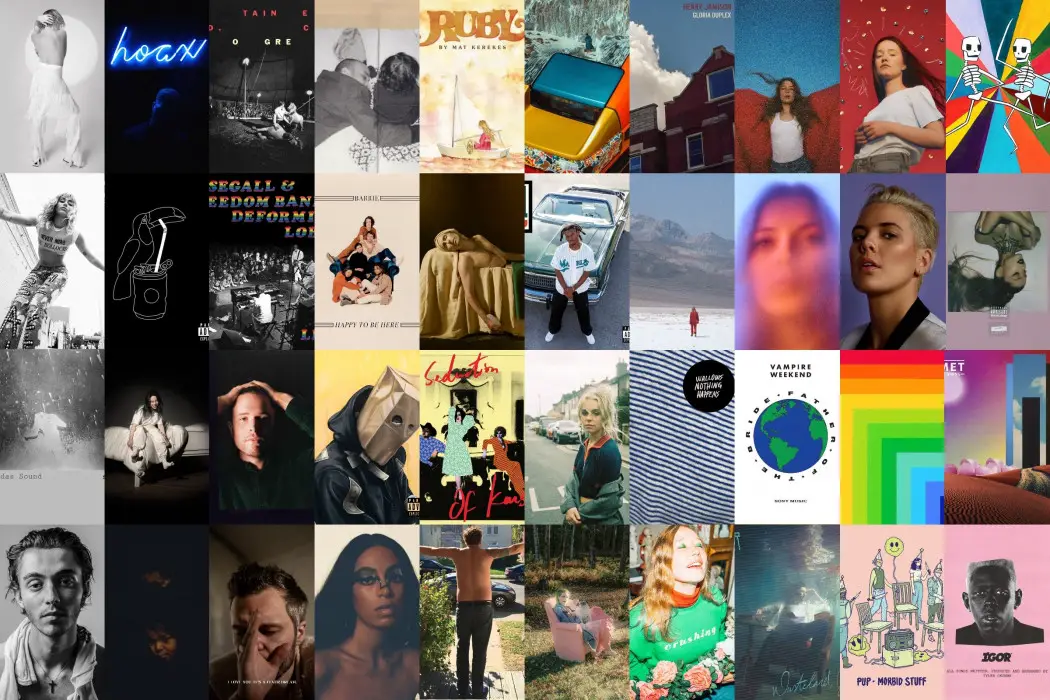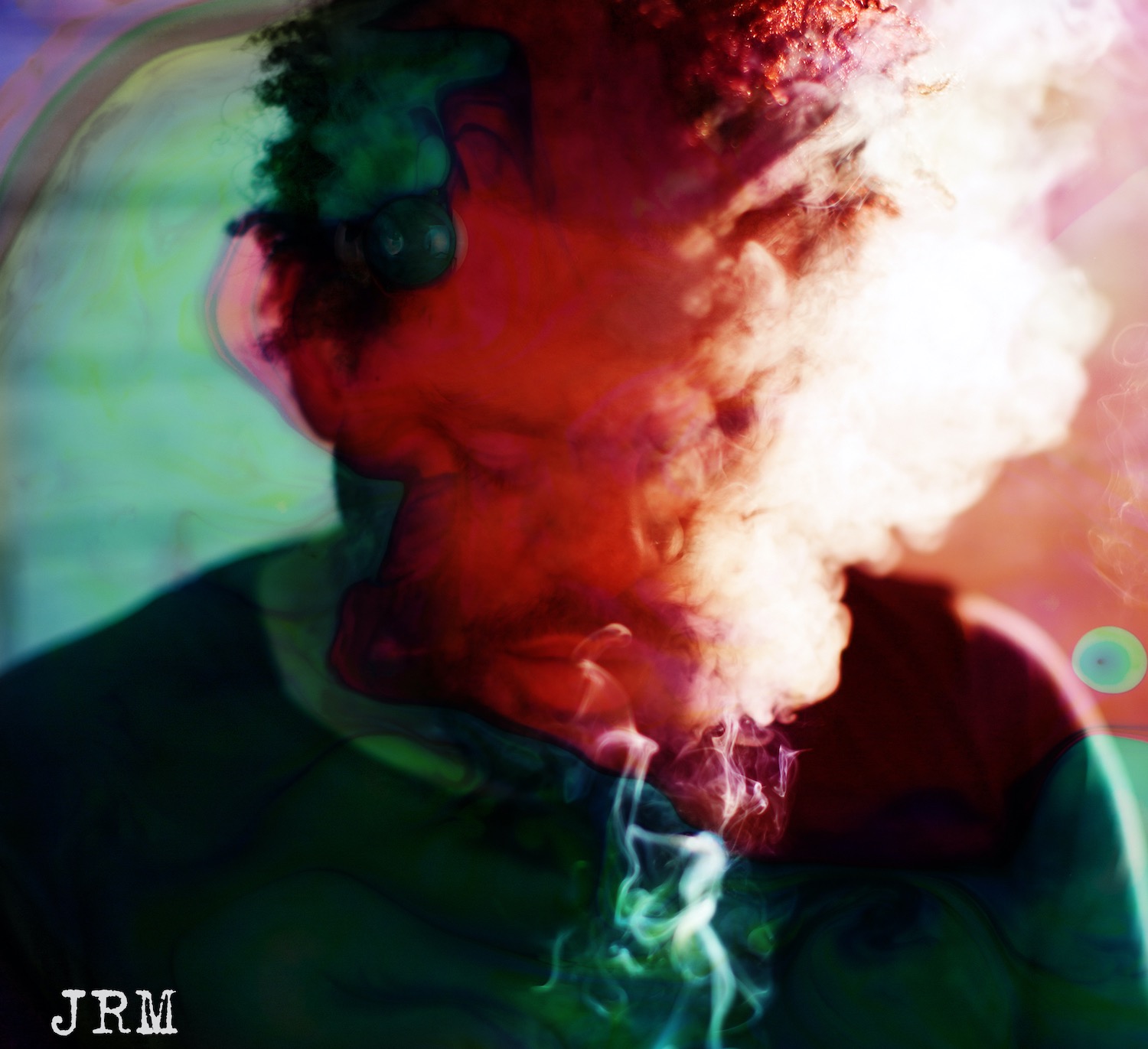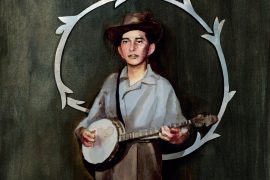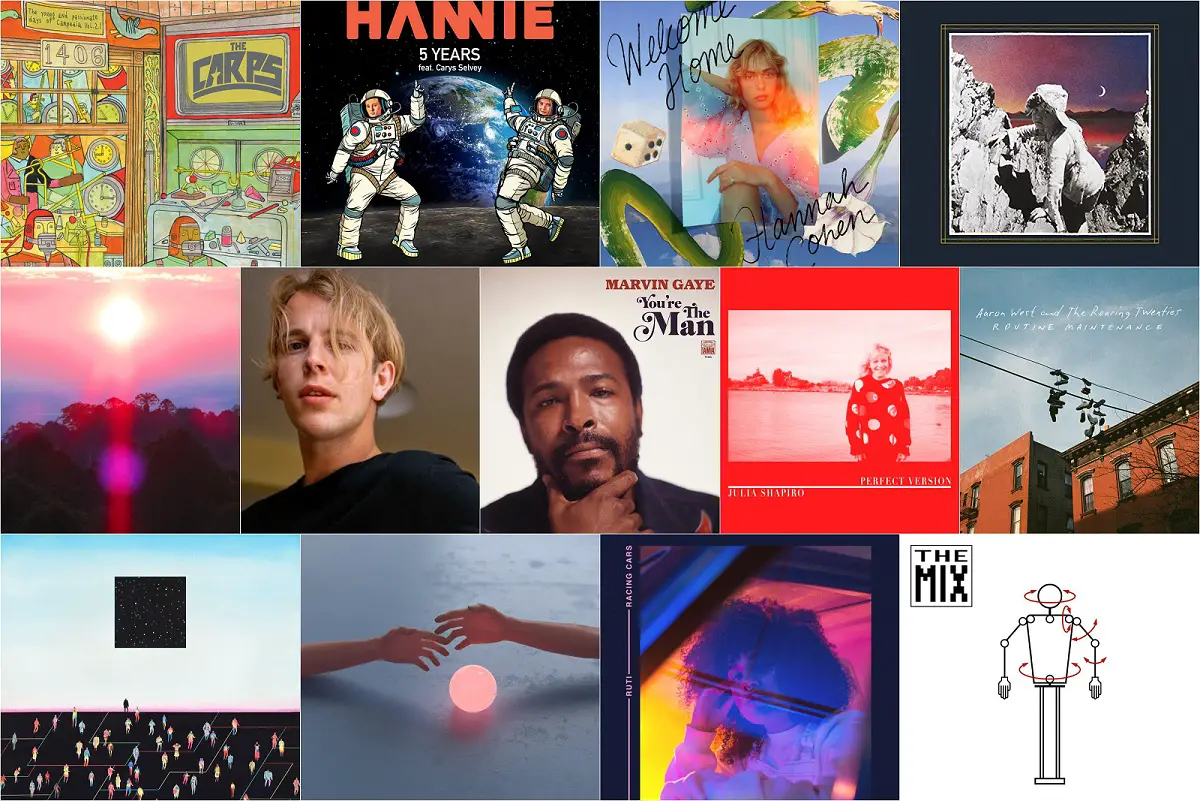The first half of 2019 has been filled with great new music! From Hozier to Ariana Grande, Anderson .Paak to Billie Eilish and many more, Atwood Magazine proudly presents our favorite albums of 2019… Part 1!
— —
No one ever seems to say “I can’t believe it’s January,” but everyone always remarks, “July, already?!” The second half of the year sneaks up on us without warning, heralding that long-awaited summer weather the Northern Hemisphere has been so eagerly pining for since New Year’s Day. Along with this heat wave, Atwood Magazine always likes to stop for a moment and appreciate the new music we’ve received in six months’ time. Every Friday, we receive notifications and email blasts announcing dozens of new albums – many of which we cover, but most of which we don’t. Hence, we proudly present Atwood Magazine’s staff-procured list of 2019’s Best Albums of 2019… Part 1, featuring our favorite releases from these past six months.
It’s an acknowledgement that new music is ever-present, and that along with the new, there comes the brilliant and unimaginable: debuts by Billie Eilish, Maggie Rogers, Sigrid, Jade Bird, and Wallows have introduced us to some of our favorite fresh faces. Meanwhile, the long-anticipated returns of Hozier, Vampire Weekend, Betty Who, and Carly Rae Jepsen have reminded us of how beautifully an artistry can develop and flourish over time — and that’s just scratching the surface on a long, brilliant list of records, each one worthy of our time and undivided attention.
These are our favorites, in no particular order: The albums that have influenced us the most, capturing both our ears and hearts. – Mitch Mosk, Editor-in-Chief
— —
When listening to an album we tend to look for a narrative. Something that helps us thread all songs together, know more about the artist’s life, connect it to our own. We’re all looking for a story. But Amber Bain wants you to know that with Good at Falling, her debut album released under the moniker The Japanese House, she’s more interested in painting a picture.Painting a picture gives you more freedom. Rather than being tethered by beginnings, middles, ends, character arcs, and the creation and resolution of a conflict, painting a picture allows you to freeze time and present life as you know it for a singular moment. It becomes part of a collection and someone’s history rather than being the history itself.
The picture Bain paints on Good at Falling is one of reckoning. As the album progresses, you hear her come to terms with different aspects of life: the increasingly painful breakdown of a long-term relationship, family trauma, the darker side of herself, the death of her first love, mental health, and trying to pick herself back up.
The result is an intimate, marvellous, and heart-wrenching image. One that begs you to pay attention to it and gets better every time you re-visit it. It’s meticulous and specific, but ambiguous and universal enough that it moulds itself to its audience’s life easily. A spectacular achievement, a perfect balance of light and darkness. “Maybe You’re the Reason”, “You Seemed so Happy”, and “Follow My Girl” are glowing bursts of energy, the brighter part of the album, made to dance to during live shows. Songs like “Wild”, “somethingfartoogoodtofeel”, and “Everybody Hates Me” lay in the shadows, introspective and at times painfully intimate. They flood Bain’s vocals in a reverb-filled sea of layered synthesisers and take their time setting the scene. “Marika is Sleeping” and “went to meet her (intro)” fall somewhere in between, completing the picture.
Good at Falling has been a long time coming, with Bain releasing her first single “Still” in 2015 and four EPs between then and 2017. It’s an amount of time that is basically unheard of in music today, but patience was key in making the album. Listening to Good at Falling, it’s clear how every single song released by The Japanese House to this day led to the creation of the album. Hints of the darker and brooding Pools to Bathe In EP are spread throughout the record, the light of “Clean” added a new element to The Japanese House’s sonic identity, as did the faster pace of “Face Like Thunder” and the the self-awareness of “Good side in”. The ambition of “Count to Nine” and “3/3” allowed for experimentation and boldness. “Saw You In a Dream” was so crucial that it was re-imagined, stripped back, closing the album with nostalgia and romance. They were all pieces of a puzzle that fit together to construct Good at Falling’s bigger picture, turning the album into the perfect embodiment of The Japanese House’s career and growth. As far as debut albums go, it can hardly get better than this. – Nicole Almeida
Hozier’s return could not have come at a better time, or with a better message: A montage of life’s hardships and music’s uplifting warmth, Wasteland, Baby! is an intense, irresistible dive into the depths of human emotion and experience. It’s music for celebrating love, togetherness, and connection; for dwelling in the beauty of life’s majesty and mystery. It’s also music of isolation, separation, loss, and defeat; for accepting and seeing through darkness and hardship. Hozier manages to find clarity and balance whilst embracing polar opposites – finding inspiration in music while paying homage to his influences and heritage.
Musically, Hozier has never sounded more sure of himself: Wasteland, Baby! expands upon the stirring blend of folk, blues, rock, R&B, and soul he established on his debut. The high moments are dynamic and explosive, sometimes built by guitar and big vocal harmonies, and other times built off strong keyboards and evocative choral chants. Such highs are offset by beautiful ballads and quieter, moody silences soaked in heavy feeling.
And we haven’t even touched upon the individual songs: Album opener “Nina Cried Power” (featuring Mavis Staples) is an anthem of hope for bleak times. Catchily moving, “Almost (Sweet Music)” is a cleverly-titled track littered with references to some of Hozier’s personal favorite jazz songs. In the outpouring “Shrike,” there is submission to a higher cause and heartfelt surrender. In “To Noise Making (Sing),” there is that rush of warm, blissful euphoria we feel when we raise our voices and come together in song. Later on, Hozier stares down the end of days with a declaration of love in the sweetly lilting album closer “Wasteland, Baby!”
Wasteland, Baby! is a tempest: A glorious storm that will knock the wind out of us, and keep us coming back for more. The glorious power of this record is such that it captures the timelessness of music itself, and the amazing feeling we get when communities get together and share their love. Through Wasteland, Baby!, Hozier delivers a raw, inspired sermon on modern life that is as relevant today as it will be in ten years from now. – Mitch Mosk
Father of the Bride
Vampire WeekendYes I was one of those fans whose levels of impatience escalated the longer the time without new Vampire Weekend material, who would replay songs such as “Giant” and “Jonathan Low” (which are now on Spotify but weren’t at the time) because they felt like refreshing alternatives to those on the albums, who would sometimes google ‘Vampire Weekend’ or ‘Ezra Koenig’ on the OFF CHANCE that I’d missed an update. At the same time, however, I really appreciate the band’s decision to drag out the wait until all was completely ready. It made the moment of unveiling more sweeter and kept things refreshing during an era of oversharing.
Father of the Bride was going to be special full stop but, with 18 songs and a jumble of musical approaches, I get why people could say they were trying too hard by putting so many ideas together at once. I like this though. It’s playfully Vampire Weekend. Depictions of doom and more sophisticated outlooks on life are woven into elaborate riffs, obscure sampling, and a myriad of influences. The jam band vibe Vampire Weekend now emit is intensified through the collaborative aspect, the additions of Danielle Haim and Steve Lacy amongst other friends.
When listening to any album there’s always songs that instantly stand out, grab you personally and encourage more plays compared to others. FOTB’s mix of tracks means that the ‘favourite’ can vary depending on mood, whether it be the lighthearted country-style duets “We Belong Together” and “Married in a Goldrush”, the catchy and uplifting but poignantly dark “How Long?” or the downbeat reflections of time in “2021” and “Jerusalem, New York, Berlin”.
Is this the best thing this year? Does it live up to the hype? I dunno. I’m just happy they’re back. – Francesca Rose
This is one of those albums where with every listen I find more to appreciate about it. No matter how many other albums I listen to as the year progresses, Crushing still stands out to me as one of the best of the year. From her emotive vocals to the swirling instrumentation she and her band employ on each track, there is a sharpness to the album as a whole that makes it shine. Julia Jacklin has crafted a gorgeous album, and it will certainly be difficult to top. – Adrian Vargas
IGOR
Tyler, the CreatorTyler, The Creator’s tone has fluctuated wildly over the years, and his latest IGOR is no exception. Never one to accept a stagnant identity, IGOR‘s release came with the assumption of a metallic suit, Edna Mode-style wig, and a body of work written, produced, and arranged all by himself. Tyler is iconic for being so deeply involved in everything he creates despite the constant evolution of the shape that takes on. IGOR is surprisingly catchy, with more radio friendly tracks like “EARFQUAKE” and “A BOY IS A GUN.” Tyler leverages his talented network to give IGOR an experimental mixtape vibe and proves his skill once again in yet another facet of alt rap. – Audrey Steeves
Dedicated
Carly Rae JepsenIf Dedicated has taught us anything, it’s that we need to be kinder to Carly Rae Jepsen. In the years since “Call Me Maybe” skyrocketed to the top of the charts, Jepsen’s sound has taken a turn, but the response to it continued to require prefacing. Instead of letting her songs be simply good, there’s always been an air of surprise — a “Don’t judge me, I swear it’s actually good” spat out before every play. But her fourth LP Dedicated proves that there’s more to this Canadian pop sensation than the narrative we’ve allowed her. It has its misses, just like any album; but when Dedicated hits, it hits hard. “Now That I Found You,” “The Sound,” and “Party For One” are filled with the standard high-octane dance vibes we’ve come to recognize from Jepsen. But it’s the Bleachers-esque “Want You In My Room” that will have you crawling back for more. In the vein of Robyn’s greatest hits, Carly Rae doesn’t just want you to listen to her words… she wants you to feel something. With Dedicated, you feel everything. – Meredith Nardino
The Jungle Is The Only Way Out
MerebaMereba, folk-soul/contemporary R&B, LA-based artist, released her long-awaited album, The Jungle Is The Only Way Out, in February. Since her self-released EP in 2013, Room for Living, Mereba’s fanbase has grown tremendously. A whole new wave of fans have been turned on to Mereba through the handful of powerful singles she’s dropped over the last couple years including dreamy hits like “Bet”. Her musicality is a force— she’s a singer, songwriter and producer (she produced or co-produced 12 of the 13 tracks on this new album). The Jungle Is The Only Way Out highlights the complexities and prowess of Mereba as an artist— one whose music communicates raw emotion and nuanced reflections. “Sandstorm” features J.I.D, an artist whose mind-blowing lyricism rivals Mereba’s sharp, perceptive lyrical moves. The album has another feature, by 6LACK, and comprises two previously released tracks, “Planet U” and “Black Truck— extended version”. Dive into this beautiful project and begin your journey here. – Coco Rich
I don’t know how it happened, folks, but I’ve become an Arianator. Ok. I won’t say that ever again. But somehow, thank u, next has become my most listened-to album this year. After last year’s Sweetener, I realized that the pop star I’d genuinely regarded as not worth my time for as long as I’d known about her actually made incredible music when she teamed up with people like Pharrell. This year’s followup, thank u, next, has a reputation for being somewhat insidious. Many people I know found it boring upon first listen, with only a few songs that they actively liked. I was one of them. But now it’s four months later, and I know every word and every harmony. The album’s confessional, somewhat pared down quality makes it a fascinating followup to Sweetener, which was a huge production. The R&B influence is delightful, and her voice sounds better than ever. – Mariel Fechik
Serving as a follow up for Pup’s most successful album, Morbid Stuff needed to be a smash, and with late night appearances and massive venues for their fall leg of their tour, it proves that it is. Where The Dream is Over focuses on the immediate aftermath of a tough time, Morbid Stuff is the survivor’s guilt that comes years later. Of course, it’s all veiled with punchy, catchy pop-punk songs. Whether it’s the hardcore-tinged “Full Blown Meltdown” or the country-intro-ed “Scorpion Hill,” Stefan Babcock ruminates on self-hatred and nihilism, often with a certain sarcastic glee like in “Free At Last.” This is all perhaps best summed up in the chorus of “Scorpion Hill”: “I’ve been having some pretty dark thoughts/Yeah, I like them a lot.” – Jimmy Crowley
It’s hard to believe that Heard It In A Past Life is a debut album. The lyrics alone have the depth of seasoned writer who is imparting wisdom on a younger generation, yet Maggie Rogers has only just hit the ripe young age of 25. Perhaps the massive level of fame reached at lightning speed was the catalyst for the ultra-mature and insightful lyrics that are amassed in Heard It In A Past Life. It’s that wisdom, that was born from a jolt to take on this new role of fame, paired with Rogers actual age and real-life experiences that has created the magical masterpiece of this album. Heard It In A Past Life is filled with anthems and ballads of falling in love, falling apart and growing up that are all too relatable, but not in a “yeah I get this” kind of way, more in a “Oh, she’s helping me see this and get through it in a different way” kind of way, which is what makes this piece of art (and any piece of art), timeless. An album highlight is the soul-filled almost 90’s-esque “Say It” that captures so precisely the feeling of falling in love when you know it’s too soon, but you don’t care because it just feels so good. This sound should be played on repeat with the windows up. “Back In My Body” closes the album on a beautiful note. Sometimes journeys can make you feel unlike yourself, but there is always a way to get back to who you really are, and you should never stop searching for that feeling. In a way that is what the album encapsulates; not losing yourself in crazy life, because when you truly are yourself, everything else is simply, from a past life. – Kelly McCafferty
Matt Kerekes’ calmness is a sign of acceptance, and that could be what lies at the heart of Ruby. A similar lyric appears in “Diamonds,” one of the catchiest tracks by Kerekes, that goes, “Years have been stolen living on the inside.” There’s something even more troubling about years being stolen as opposed to slipping away, but the song is not angry, it’s actually more of a feel-good anthem for dancing and celebrating. It’s unexpected, especially with Kerekes’s inclination to anger in Citizen, but Ruby manifests a new level of tender energy — it is comfortingly optimistic, parading through the struggles of life. – Danielle Chelosky
In a music scene where anti-pop seems to be taking off, with alternative acts becoming more and more popular and a growing aversion towards what many call “cheesy pop”, it seems quite risky to release an album full of upbeat, easy to listen to tracks. However, Sigrid’s debut album “Sucker Punch” was the epitome of the latter and did not fail to impress. Embracing 80s elements from pulsating synths to repetitive drum beats, every track in the hook driven album is set to get stuck in everyone’s minds. The artist’s genuineness, one of her main characteristic features, is palpable throughout. With songs such as “Sight Of You”, a thank you note addressed to her band and fans, and “Don’t Kill My Vibe”, in which she takes a stand against being disrespected in the music industry, her authenticity and transparency are mirrored from top to bottom.
Although buoyant and energetic as a whole, it also contains powerful heartfelt ballads. “In Vain”, despite being a slower song, stands out as much as any other track in the album. Sigrid’s vocal control is impressive, her dynamics and tone shaping every word resulting in a raw delivery that intensifies the lyrical content. Another staple song of hers, fan favourite “Dynamite” proves that the artist doesn’t need extravagant production for her songwriting and artistry to shine through. A captivating piece of work, “Sucker Punch” showcases Sigrid’s versatility and good taste, establishing the artist as a promising hit maker within the pop scene. – Alicia Bugallo
Solange is, without a doubt, one of the most holistically creative artists of the 21st century. The release of her 5th studio album, “When I get Home”, only perpetuates that notion. The track Saw ThingsI Imagined is an astounding feat of her capabilities as all she does is repeat “Saw Things I Imagined” in different melodies for the majority of the song. Yet, it’s still one of the most poignant and immersive songs on the album. Also, no Solange album would be complete without the specific attention to the significance of blackness and black art. From the dancers in her music videos, her Mugler clad press shoots, and lyrics she reiterates how talented black people, and black women really are. Although, Solange, reconstituted in tracks like Almeda, doesn’t just commend black artists and black creators, she says you’re powerful for being black and living every single day. Unfortunately there are still some interesting opinions saying this album is “boring”, and I simply don’t know a single way in which that is true. – Jesse Herb
Ulfilas' Alphabet
Sundara KarmaSpring started beautifully for lovers of British indie rock, with Reading foursome Sundara Karma’s sophomore album dropping on 1 March this year. The album comes after an enjoyable but fairly low-risk record that, although successful among the general audience, was faulted by critics on account of its unambitious and somewhat conventional sound. Though the band may not have been particularly regretful about their first effort’s failure to win critical acclaim, they definitely endeavoured to exit their comfort zone in the follow-up, and their effort really paid off. Ulfilas’ Alphabet is a complex, intriguing work that sees the band dip their toe into a wide range of different genres, all the while preserving a remarkable level of sonic consistency – not least thanks to Oscar Pollock’s ethereal vocals that tie the songs together into a beautifully comprehensive piece of music. – Ditta Demeter
James Blake’s fourth album, Assume Form, was the first exciting thing that happened to me in 2019. I’d been in a music slump, desperately craving new obsession, and Assume Form was the exact thing I needed. It’s an exciting, diverse, and gorgeous album from the producer/singer-songwriter, filled with incredible features and some of his most dynamic writing to date. Songs like “Where’s The Catch” and “Tell Them” bring energy while “Into the Red” and “Don’t Miss It” bring a haunting beauty. Blake’s production is also more diverse than ever on this album. His collaborations with Metro Boomin are a thing of beauty, and his usual spare trap beats are supplemented by a newer layer of experimental sounds. – Mariel Fechik
The Seduction of Kansas
PriestTo: postpunkur1979@yahoo.com
From: howdidyougetthis@email.com
Subject: A listening suggestion during the newfound halcyon days of restlessness
Well, I’ve been doing some thinking (always dangerous), and I know you haven’t really listened to anything new since Franz Ferdinand up and blew your mind on their first shot only for Interpol to release Antics seven months later and leave your 2004 bookended quite nicely, but I suppose just about now, in 2019, that we should be asking ourselves a new question, lest we never and have this whole thing blow over us: just how exactly did we not expect post-punk to make not one but two comebacks in our new millennium?
How exactly do we not expect any genre at this point not to make some form of comeback or leave some impression on some art college reject (inclusively rejecting of or rejected by) holed up in a bedroom or a garage listening to records-upon-records of jangling, technobopping, musique concrete flirting, new wave waxing, post-punk vagaries at volumes too loud for their parents’ Christian homes. See when, in the age of Instagram feeds (perhaps the greatest archive of the commons with a shot to be recovered by some betentacled alien or Earthling civilization circa 100 million years from now, finally managing to decrypt our databits and reassemble them into the millennial Calima: dickbutt) we no longer need worry about the word phase. Replaced, it has been, by new netslang slung by fingers swyping. The difference is recurrence; if it happens once it’s just a fad, thus 1979; if it happens again it’s a renaissance, thus 1999; if it happens a third time, it’s an aesthetic, thus 2019. The movement is a filter now, an overlay on your profile record just as much as it is a delay or reverb on your record. Good. I couldn’t think of anything better; this is the same genre that birthed us The Police, The Talking Heads, disposed itself to the The Yeah Yeah Yeahs and the White Stripes and now undergoes exploitation of everyone looking to add fashionable iconoclasm to their art: Parquet Courts, Iceage, Protomartyr, Drahla and, for my pick of the post-punk album of the year, Priests’ The Seduction of Kansas. A throwback look, if ever there was one, to the Topeka punk scene during the Regan administration; an aural accompaniment to Stranger Things days of horror submerged in Eighties fluff, substituting the Demogorgon’s for the whiteteeth-lying politickers and the stark industrialism for a good surfrock riff, while keeping that barnhouse reverb and fuzz—Footloose with some actual angst—all demonstrating the budgeted wasteland of middle America rife with the new breeds of armchair philosophers and mental health nuts and speed freaks that we call neighbors, if not ourselves. This might not fill your gullet with the same coolismo as your dearly beloveds, but it might just remind you that in 1979 Elvis Costello was drawing on Americana to define a new aesthetic of beatnik punk. And if 100,000 years from now, when the Edenites arrive on our planet’s burnt out husk, I hope by freak chance this the only record left on an Apple server readily available for download. Because I expect them to immediately destroy it for its blasphemous sound, but not before it freaks them right out of their unisex bathrooms, kale-lined plates and purplepicket spaceships. Conservatives, pah!, they never change.
Best,
–Ben Niesen
Optimal Lifestyles
Pkew Pkew PkewMy Finest Work Yet
Andrew BirdAndrew Bird’s career has gone through many phases since he began Suzuki violin lessons at the age of 4. Like the moon, Mr. Bird’s contributions have changed shape and even luster over time. As a true artist, he has followed his stylistic leanings from jazz to swing to folk to rock and lyrical inspiration from personal, political and even historical muses. Whether a member of the band or playing solo, Mr. Bird’s work always offers listeners thought provoking lyrics set to sophisticated and well constructed musicality featuring, his whimsical and virtuosic whistle.
These boxes can all be checked regarding Mr. Bird’s most recent album, My Finest Work Yet (March 22, 2019, Loma Vista Recordings.) Recorded live in the studio, My Finest Work Yet, feels vital and fresh in the ear. After over 15 studio recordings, Andrew Bird has successfully and expertly mixed whimsy and emotional depth with political substance, wrapped it in a blanket of fun lyrical ambiguity and called it My Finest Work Yet. And while Mr. Bird intended this title to be tongue-in-cheek, it is indeed, really darn good. – Ilana Kalish
Billie’s star rose so fast in the past year that you could be easily excused for missing it entirely. She’s ridden a tsunami of hype that seems to demolish anything it touches, and she racks up streams that no other alternative artist can even touch. To top it all off, she’s not even eighteen yet.
But the wunderkind’s debut album argues that there may be a good reason for all this. Her music challenges the pop status quo in ways unheard of since Lorde crashed into the mainstream with “Royals.” Direct comparisons to the New Zealand songstress may well be warranted. They both croon softly over minimal production, eschewing the heady synth blare and near universal belting of Top 40 baiters. They both proved that the public hungers for more than the same three chords recycled with a turnstile of singers.
And the music itself is damn good. Bolstered by driving basslines and a horror atmosphere that plays like R-rated Hot Topic, Billie compiles a set chock full of hooks. It grabs you from the BDSM-funk of “bad guy” to the shadowplay of “bury a friend,” releasing you only long enough to hit the repeat button. Her skillset may only rest in this small lane, but she chews the scenery with vicious delight within it. And considering she’s such a young artist, the potential for growth is nearly limitless. If she churns out ten more albums that build on the strengths of WHEN WE ALL FALL ASLEEP, the future looks bright indeed. – Anthony Kozlowski
Imagine if Kerouac had a drum kit inside City Lights Bookstore or if Ginsberg had thrashed a guitar while breathlessly bellowing “Howl” and you begin to understand Fontaines DC’s debut album Dogrel. It’s a poetic exploration into what it means to be Irish, a frantic excursion into the undiscovered corners of Dublin.
The catalyst of a burgeoning Irish punk scene, Dogrel serves as a warning shot to the world about the upcoming wave of Irish bands. Picking up where Girl Band left off, the quintet harnessed a sound that is both brash and poetic, fierce but self-aware; it’s an album that gets your head simultaneously banging and thinking.
Album opener “Big” is an ode to Dublin, growled in a thick Irish brogue:
Dublin in the rain is mine,
A pregnant city with a catholic mind,
Slick little boy with a mind of Ritz,
Pulling that thread for the next big fix, this,
My childhood was small
My childhood was small,
But I’m gonna be big
But I’m gonna be big
Whether it’s the manifesto-esque “Chequeless Reckless”, the surprisingly catchy “Too Real”, or the face-melting “Boys in the Better Land”, the energy is palpable and leaves the listener feeling as if they’ve been to the Irish capital. – Oliver Crook
Portraits
Greyson ChanceGreyson Chance is re-introducing himself as the matured young adult that he is becoming. ‘portraits’ is a beautiful album of self reflection, love, heartbreak and growth. From the love anthems of tracks ‘yours’ and ‘shut up’ to more heavy beats of ‘black on black, Chance displays his wide vocal range and newly crafted sound. ‘portraits’ gains its authenticity with the inclusion of story interludes and sound recordings that are scattered in the first and second halves of the album. After keeping up with his EPs and singles over the last year, I was happy to hear a rendition of ‘Seasons’ called ‘seasons nineteen’ on the album, which is a monumental song to Chance. The rendition takes bits and pieces of the original track while incorporating the sonic vision of the album, allowing it to fit right into the track list. – Kelsey Fitzgerald
Like pretty much every album ever created, Kevin Garrett’s Hoax is best listened to front-to-back but what sets Hoax apart its gripping sense of emotional immediacy, which is even more impressive considering he’d written most of the albums track years prior to the album’s release. The emotions embodied in every single one of the album’s 13 songs are astonishingly distinct, but each track interweaves with one another to create an almost disturbingly gripping narrative. Music soundtracks as many moments in my life as possible but I find it hard to listen to any of Hoax’s tracks without paying them my complete undivided attention. With most other albums that period of intense fixation often subsides but with Hoax, I’m almost certain it’ll never end. – Luke Pettican
In Rose Gray’s debut single, she talked about people’s eternal search for the “Good Life.” Lyrics referenced a “modern day hippie, hair’s all messy, in [their] ex’s baggy tee,” “waiting tables for [their] money,” while Gray offered heartfelt and warm words to the song’s subject: “Give like you got nothing to borrow,” “live, live, live that good life.” The video for the song, made entirely by Gray, featured her friends and family in an intimate and warm setting, sharing stories we never get to hear but guiding us through the wide spectrum of human emotion.
In her sophomore single “Blue,” Gray taps into one of the most complex and difficult situations: Caring for someone you love andwanting to help them, but not being able to do so. In order to re-create the strong bonds of friendship she sings about, Gray drove out to her hometown and filmed scenes that brought her childhood back to life, interweaving them with snapshots of Gray’s present-day reality. By the end of the video, you feel like you’ve had as much access to Gray’s life as the friend she’s depicted with.
This feeling of intimacy and honesty is at the crux of Rose Gray’s music, and her debut EP Blue, Lately is living proof of that. Through her smokey vocals and beautifully transparent lyrics, Gray invites you to take a peek into her own life while also creating something that can be highly applicable to your own. Her music envelops you in a familiar, comfortable hug, as cozy and introspective as drinking warm tea by a fireplace during the early hours of the morning. She has no problem baring it all right from the start of her career, and by doing so creates a unique bond between listener and artist. Blue, Lately is an impressive achievement, presenting Gray’s identity, talent, and skill in a way that makes it impossible not to crave more material from her. – Nicole Almeida
Despite the commonalities of white lined album covers, and proper noun titles, “The Balance” is something completely new for Welsh band Catfish and the Bottlemen. The band, which usually dwells comfortably in raw, garage rock, dips their toes in the Pop Punk pool with their tertiary album. Tracks like Basically and Mission instantly come to mind with their stronger inclusion of melody and less reverb from the guitar. While it is a step in the right direction, the band has only scratched the surface of experimentation. Hopefully with the success of The Balance, Catfish and the Bottlemen will dabble further into the exploration of sound and lyricism. – Jesse Herb
There’s nothing like the great chaos of your early twenties; when everything feels like it’s simultaneously falling apart and falling straight into place. On their first full-length record, up-and-coming indie rock outfit Wallows captures each and every moment of uncertainty, dread, and heartache (with some happiness in there, too). Besides the masterful storytelling, this record is expertly produced, each song flowing seamlessly into the next. Though at times the content feels a bit too collegiate, it works for such a young, scrappy band, eager to find themselves in the world not unlike the co-eds on your local liberal arts campus. Leaning into the bedroom-pop of it all, Clairo serves a decadent verse on one of the records strongest tracks, “Are You Bored Yet?” Not only is Nothing Happens an incredibly strong debut project, it’s also one of the most memorable indie rock moments of the year. – Meredith Nardino
Jade Bird
Jade BirdWhen I tagged Jade Bird as my artist to watch for 2019, my expectations were unfairly high, but following the release of the Dolly Parton-punk jam “Uh Huh” and the soul-bearing “Love Has All Been Done Before” could you blame me?
In hindsight, what I anticipated from her debut bordered on cruel and yet somehow she still managed to blow me away. Gutsy, raw and honest, it’s the sound of a twenty-one year old struggling to find love, happiness and—most importantly—herself. And it’s catchy as hell.
The self-titled offering is the musical equivalent of a heart-to-heart in the pub, and as the last song dies you feel as if you know Bird personally. Her ability to open a vein and bleed into the grooves are what take songs like “Good At It” from good to great. A sun-bleached take on Alanis Morrisette’s “You Oughta Know”, her admission of the more intimate, tender emotions makes it effortless to instantly connect with: “And are her lungs, made of steel? So when she says she loves you, you forget how I made you feel.” This ability permeates the whole record but it’s perhaps done best on the anthemic “My Motto”, where she confides her approach to relationships:
And that’s my motto
Don’t let ’em near enough to let me down
All this love ever does is break me now
And if it hurts so much to stay, then let him go
Oh, that’s my motto
If the quirky youngster can produce something this complete and emotive for her debut, you can only imagine the height of my expectations for what’s next. – Oliver Crook
Crush on Me
Sir BabygirlCrush on Me by Sir Babygirl, the project of American artist and producer Kelsie Hogue, can be described as bubblegum pop in a literal sense: As sugary, luminescent, child-like hyperactivity, created by an artist as though they’re in their own bubble that’s being individually blown up with excessiveness. The album is less of a child-like innocence, however, and more of a messy youthfulness- The teenager amidst house parties, relationship dramas, and emotional complexities. The bubblegum-blowing is self-absorbed nonchalance, a visual equivalent of ‘whatever’, but still coated in neon and exaggeration.
Simple repetition is delivered melodramatically. The line ‘The mind’s a funny thing to sell at the market (the market)’ in “Heels”, for example, and its chorus ‘You don’t/ You don’t know me anymore/ I changed my hair! I changed my hair!’- the vocals shrieking above rumbling synths. In “Haunted House” insecurities are addressed through the context of a drunken house party, ‘And I don’t know if I wanna be free/ ‘Cause the freedom of this party is killing me’ sung alongside possessed-sounding wails, theatrical violin, and rave-like ambience. The trope of the cheerleader features throughout, as way of addressing self-destruction caused by social expectations in “Cheerleader” and in the overall persona- Sir Babygirl being a celebration of queerness and non-binary identity.
It all plays with notions of pop and performance in a way that can easily be considered irritating but it’s also really addictive. Sir Babygirl wants to be heard/seen and “Crush on Me” achieves this. – Francesca Rose
Hi, this is Flume
FlumeEvery time Flume releases an album, the genre of EDM continues to bend and bend to the point that it might as well be considered a pretzel. When Flume, otherwise known as the mortal Harley Edward Straton, released his first, self-titled album in 2012, he made such a splash that the album and its single “Sleepless” got the number one spot on Australia’s charts – beating out One Direction. Then, when he released Skin 2017, we got to see what he could do once he could collaborate with music stars like Tove Lo and Vince Staples. With Hi This Is Flume, he returns to the sort of beat-making that brought him to stardom, but also shows how much he has matured whilst pushing himself and EDM forward.
Of course, the album is front-loaded with some tantalizing crowd-pleasers – most notably, “High Beams” a beautiful electronic/rap hybrid featuring rising UK hip hop wonderkid slowthai. But what electro-heads everywhere should really be rejoicing in is the instrumentals. They are so utterly beautiful. Not because they are so left-field that only a few stoned dorm-bound college students can truly understand them, but because they are different enough that it pushes the mainstream’s understanding of EDM to a farther (and better) place. Listen to the album in its entirely, with each and every seamless transition, and you can feel Flume holding your hand as he guides you down the rabbit hole.
Personally, this journey truly locks into top gear at the end of the album starting with “Wormhole,” where he masterfully incorporates a woodblock into an otherwise synth-heavy track. “MUD” hits you with such immediate force that you’ll can skip your afternoon cup of coffee, and “Vitality” has one of the filthiest drops I have heard in recent memory. Some of these songs like “Upgrade” are flecked with recycled beats of the past, but the album is called Hi This Is Flume after all. The most experimental tracks of the entire album are the final two: “Amber” and “Spring.” “Amber” is especially interesting for it opens with a cacophony of jarring cascades, which are then juxtaposed to smooth waves of synthesizers – as if it were a sort of good versus evil scenario. It is nice to see the album end on these abstract notes. It’s almost like Straton is telling us that he’s not done yet. – James Meadows
One of the most important records written this year (although its creator might humbly argue otherwise), Henry Jamison’s Gloria Duplex delivers powerful insights on toxic masculinity and male privilege through nuanced, utterly breathtaking folk/pop music.
A single listen to Gloria Duplex is all one needs to know that singer/songwriter Henry Jamison is one of America’s modern folk masters. With an ear for sweet, unique melodies and a mind for beautifully poetic, thought-provoking lyricism, the Vermont-based artist makes easily accessible music that is at once exciting and important, without being preachy, haughty, or condescending.
Named after the Latin term for “seeing both sides” or “seeing complexity,” Gloria Duplex finds Jamison exploring what it means to “be a man” through a transformative musical journey that starts with himself and his acoustic guitar, and ends up in a brave new world full of nuanced orchestrations, synths, and “electronic” production. For Jamison, Gloria Duplex is rooted in the idea of transcending everyday prejudice — of practicing an acute self-awareness where we recognize ourselves for who we are, and incorporate that knowledge into all interactions with our surroundings.
What’s most important about Gloria Duplex’s presentation is that it’s a memorable and moving musical experience: One that elevates the meaning behind the songs, even if you have to listen to them a few times to fully grasp the lyrics’ importance. Opener “Gloria” will stun; “Boys” can play on repeat all day; “Ether Garden” is simply gorgeous; “True North” is absolutely immersive; and those are just the first four songs – this series continues through the album’s twelve tracks, until “Darkly” concludes with its shiver-inducing harmonies, leaving us to ponder the significance of gender in a way that we perhaps hadn’t before.
You don’t need to be an expert in sociology to appreciate the significance of Henry Jamison’s sophomore album. He lays out everything so clearly and with such poetic finesse, guiding us through his own soul-searching and laying the groundwork for reflections our own. Whether or not it receives the praise it’s due, Gloria Duplex is an important album and it couldn’t have come at a better point in time. – Mitch Mosk
Always the melodic type, Anderson .Paak keeps tradition going strong as ever on the instantly appealing Ventura. All forty minutes of his fourth record are gleefully soulful and enjoyable; it’s hard not to hard bob one’s head cheerfully along to the bouncing beat on “Jet Black” and “Twilight,” among the multiple highlights here. Anderson .Paak also demonstrates that he can pull off an effective collaboration with almost any artist, no matter whether they be 15 years past their prime (Andre 3000 on record opener “Come Home”) or eight years past their last breath (Nate Dogg on record closer “What Can We Do?”). “Do you want to stay together?” he asks on “Make It Better,” an enrapturing duet with Smokey Robinson. “If you do, then let’s please make some new memories.” This line works just as well in reference to his fans as to a potential love interest: if Anderson keeps churning out records as high-quality as Ventura, he’s a guy we’ll want to have around making pleasant memories for us indefinitely. – Josh Weiner
Tasmania
PondI fully expect this album to be forgotten by me once that mophead Kevin Parker finally releases that goddamn Impala album this year or the next (he’s such a goddamn tease, I say with love). Which is a goddamn shame, Impala, because were it not for you Tasmania, and really Pond’s entire career would never have left Australia. And like it or not, Pond always gets written by the common psychonaut as the Kevin Parker backer band—and while this was warranted for their early career as a mutual symbiosis for both projects, I myself only find Beard, Wives and Denim to be overwhelmingly memorable precisely as it separates from their MGMT/Impala influences if for just a brief moment—while critics have written them up as being abreast if not leading “the movement.” Well, I don’t buy that for an instant either, if anybody’s pushing this damn musical effervescence it’s King Gizzard and the Lizard Wizard’s Flightless coop, bric-a-bracking together a competitor to the likes of Elephant Six or the Animal Collective, i.e. neo-psychedelic history, and Pond just can’t compete with that level of musical-social engineering, no matter how wide they and Kevin Parker cracked open the door. What they can claim however, is a damn good follow up to The Weather, a topper to an upward trend since Man, It Feels Like Space Again, divided into an “upbeat-side” and a “downbeat-side,” one for all the Oracular Spectacular fans and one for all Congratulations diehards, still thumping on about its clear and undebatable *huffs* SUPERIORITY to the former. Really it just reminds of the Dead’s Blues for Allah, what with a side for jamming and a side for spacing. Where Blues does the ancient Caliphate crossing caravan, Tasmania crafts a requiem for a dying Adelbaran while notching more wins in Nick Allbrook’s book of damn fine poetry, none better than the faceup to political realities on “Hand Mouth Dancer” (“So you got political, can you speak on that?/ I didn’t get political, I just faced the facts/ Is it critical we react?”) or the pure desperation of the commons in a country run by rabble with “The Boys are Killing Me” (“I’m lucky, I’m lucky, I’m lucky just to sleep at night, oh/ So we linked arms and we staggered off into the night/ Drunk, but overjoyed just to be employed”). It’s not all doom and gloom either as the band takes time to do the good thoughts, bad thoughts routine on “Burnt Out Star” and give us the Carl Sagan rap that at the end of the day, we’re just star stuff—“a way for the Cosmos to know itself.” And I don’t want to sound trite in gushing “WOW, THEY ARE SO BRAVE,” or rant on the merits of their commentary being a keystone moment for socially conscious psychedelia—it would all amount to a circular psychotropic diatribe trying to prove that Pond actually is *huffs* OBJECTIVELY BETTER THAN TAME IMPALA, LEMME TELL YOU. Because that’s not what it’s about here, it’s about what has been rather than what will be, the joy of the moment-thing and all that entails, so enjoy the death rattles of society, read some Phillipe Druillet as it sobs and moans, listen to some Pond as it hacks and coughs, find yourself a Tasmania and breath in that fresh air before it’s all gone. – Ben Niesen
She is Coming EP
Miley CyrusMiley Cyrus has been teasing her return since her single “Nothing Breaks Like a Heart” with Mark Ronson was released late last year. She is Coming, the first EP of a trilogy that combined will make the album She is Miley Cyrus, was released in late May and definitely did not disappoint. A swerve from Cyrus’ country roots, which she explored on her last album Younger Now, She is Coming brings Cyrus back to the hip hop and urban sound she explored on Bangerz. The six-song EP serves as a great taster of Cyrus’ musical identity, from the chaotic and fun “Catitude” featuring Ru Paul, to the anthemic and empowering “Mother’s Daughter”, to the heartfelt closer “The Most”, Cyrus proves she is at her best when she can be eclectic and fully embrace all corners of herself. “D.R.E.A.M.” and “Unholy” are the most direct responses to the clean, romanticised, and PG persona Cyrus embodied on Younger Now, frequently referencing drug use and people’s darkest habits (“I’m a little bit unholy/ So what, so is everyone else” and “We’re all trying to fill the lonely/ Drugs rule everything around me“). “Party Up the Street” is the most chilled out song on the EP, and slows down the pace while still being danceable and delicious to listen to. Swae Lee is a welcome addition to the song, and his and Cyrus’ voice blend well in the chorus. She is Coming is a strong EP that reveals Cyrus’ strength and adaptability as an artist. She has always worn different wigs and used different names, but it turns out that Miley Cyrus is at her best when she can just be herself. – Nicole Almeida
The Tallest Man on Earth’s Kristian Mattson has been traversing a litany of soundscapes and formulas with each new album release, and I Love You. It’s A Fever Dream. marks a pivotal shift for the artist, one that showcases his musicality with poise and brilliance. Often seen as the vagabond who speaks of his external adventures, he is now wandering an internal path that leads to an openness that hasn’t been seen nor heard before. Joining him is more than just the staples like banjo and guitar, but subtle synths and percussion laced melodies add an additional flair that makes this album a triumph. – Adrian Vargas
ZUU
Denzel CurryLast year’s TA13OO would’ve been one of my albums of the year had I discovered it sooner. Curry is inventive, emotional, and raw. ZUU is a continuation of the directions we saw him going on TA13OO. Songs like “WISH” and “SHAKE 88” have intricate and catchy choruses, while tracks like “RICKY” and “SPEEDBOAT” are a little more introspective. Like so many great rappers before him, Curry makes songs that hit and linger. They’re appropriate for partying or listening on your own. – Jimmy Crowley
Happy to be Here
BarrieBarrie is Brooklyn based project made of Barrie Lindsay, Dominic Apa, Spurge Carter, Sabine Holler, and Noah Prebish. The five piece make effortless sounding dream pop melodies with vocals flowing ever so smoothly throughout each track. Their debut album, Happy To Be Here, is charming and soothing. Let them take you back in time with the familiarity of classic pop music blended with modern alternative features. Take a listen to standout tracks ‘Geology’ and ‘Clovers.’ – Kelsey Fitzgerald
2019’s perfect pop record didn’t come from the Arianas or T. Swifts of the mainstream machine. It came instead from a singer who broke the shackles of a major label contract and made music on no one’s terms but her own. On her first independently released album, Betty Who embraces herself wholeheartedly, and the results are nothing short of magnificent. She knocks down the gate with the effervescent “Old Me,” a mission statement and anthem to self-acceptance:
Wake up and I’m feelin’ fly
This Morning feels like summertime
Nake in my livin’ room
And just like that, I’m over you
From there it only goes up. Betty takes listeners on a confessional journey that holds nothing back, whether it be the throes of ennui and loss (“Just Thought You Should Know”), the syrupy lust of a late night booty call (“Taste”), or unrestrained bliss (“Marry Me”). It’s a record for anyone who feels with their whole heart and nothing less. And it practically begs you to drag these emotions onto the dance floor. Pop has a new queen, and her name is Betty Who. – Anthony Kozlowski
Trust in the Lifeforce of the Deep Mystery
The Comet is ComingIf anyone ever needed their faith restored in the lifeblood of jazz, they need not look further than The Comet Is Coming’s Trust in the Lifeforce of the Deep Mystery. I only learned about this album a few months after its release, but upon first listen I was already hooked. When the opening the track conjures up meditative feelings that feel otherworldly, it’s hard not to get sucked in. Interlaced throughout the album are warbled and placid synths mixed with some of the most stellar saxophone and percussions rhythms of the year, creating this intoxicating feeling of euphoria that welcomes all with its embrace. Jazz has never looked, nor sounded, so good. – Adrian Vargas
Solitude
King Midas SoundIn a world of manufactured pop stars and transparent money-making gimmicks, records that challenge the status quo, shock and inspire don’t come very often. Out of all the albums released so far this year, Solitude by King Midas Sound, for me, has been the most original, thought provoking and powerful. In it, prolific UK beatsmith Kevin Martin aka The Bug and spoken word poet Roger Robinson join forces to create an intimate and deeply affecting portrayal of the breakdown of a relationship and the resulting loneliness, paranoia, delirium and depression that comes with it. The drone soundtrack created by Kevin Martin sets a dark and desolate stage of unease and claustrophobia more akin to a film score then conventional music. Roger Robinson narrates the lead characters journey into existential oblivion, the breakdown of his relationship and eventually his mind. The combination of Kevins expert sound design and Roger’s deep mournful prose transports the listener into a relatable world of dread and despair that is easy to get lost in. – Kareem Ghezawi
Crash Talk
Schoolboy QNow that he’s 32 and five albums in, Crash Talk understandably has less of the recognition-seeking hunger than some of Schoolboy Q’s earlier music did (see 2014’s mainstream debut Oxymoron for the L.A. rapper’s apogée in that regard). But at a brisk 40 minutes, Crash Talk is considerably more focused than its predecessor, 2016’s nearly-twice-as-long Blank Face LP, and the rapper’s gamble at making a calmer, mellower record than anything we’ve heard from him previously proves successful, for the most part. The extra time Schoolboy Q took to release this record— both for creative purposes and out of respect for his deceased companion, Mac Miller— has resulted in a well-polished and coolly introspective record that easily ranks among 2019’s better hip-hop releases so far. – Josh Weiner
Deforming Lobes
Ty SegallTy Segall is an artist who does what he wants. The proud owner of a discography containing an estimated 4,725 albums spanning whatever genre he wants, the California rocker always has a vision for his records and manages to pull it off.
It should come as no surprise then that his latest Steve Albini-produced live album, Deforming Lobes, pays no notice to typical norms. There’s no live crowd. There’s no hits. There’s no banter. The eight songs aren’t even in the order performed.
Cherrypicked from his three nights at the Teragram Ballroom in Los Angeles, it’s a perfectly curated representation of some wild shows. And I know that should sound awful, yet it’s anything but.
The lack of crowd noise combined with the intensity of their live show makes it feel more like you’re sat in the corner of their rehearsal space than listening to a sellout show. The band is unbelievably tight, running off on mad solos and rhythmic ramblings at every opportunity. In a lot of ways this albums feels like the band’s—rather than just Segall’s—35 minutes of fame. Whether an ardent Segallite or a new listener like myself, this album captures the energy, musicality and eclectic nature that makes him such a juggernaut. – Oliver Crook
— — — —
